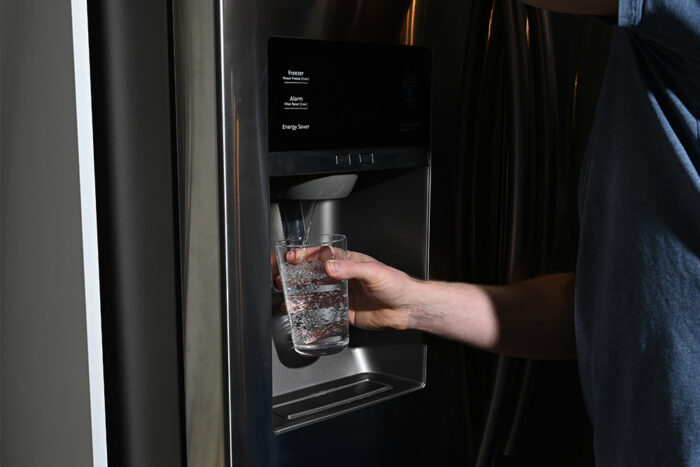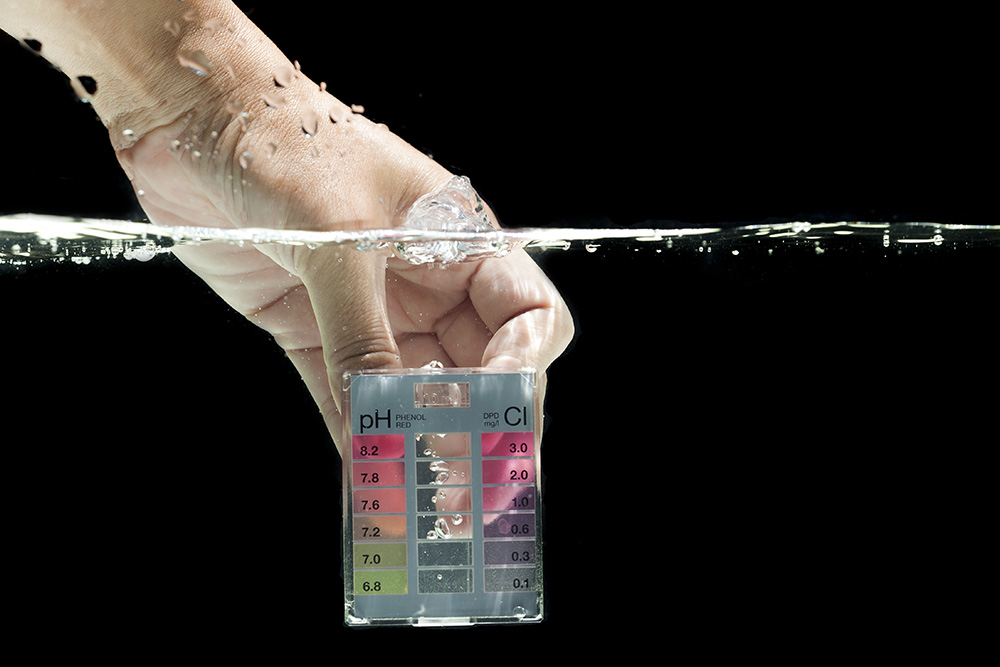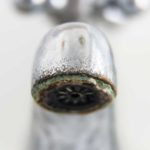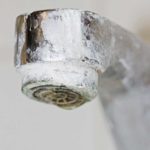What is pH and how does it affect water quality? While the pH level of your water may not be the first thing you think of when it comes to your water quality, having unbalanced pH levels can cause household headaches and unexpected expenses. If you have concerns about pH in your home’s water supply or what different levels mean in your drinking water, here are a few things to consider:
- What is pH and what causes it to be unbalanced?
- What are the signs that I have unbalanced water?
- Is unbalanced water a health concern?
- What can you do to fix it?
What is pH?
Technically, pH stands for “potential of hydrogen, “which refers to whether that substance is more willing to give up a hydrogen ion or take on an extra hydrogen ion. The pH scale ranges from 0 to 14 and consists of 3 different categories: acids, bases, and neutral. A pH level of 7 is considered neutral and it will not gain or lose a hydrogen ion. Anything measured below 7 is considered an acid. Acids have more hydrogen ions and therefore their “potential of hydrogen” is to lose these ions. Bases have pH levels above 7 and are also known as alkaline. Bases have fewer hydrogen ions, so their potential is to take on more of them. Much like you measure hot and cold for a water’s temperature, pH levels are used to measure the alkalinity and acidity levels in water.
Each number on the pH scale is ten times more or less than the next level. A pH level of 6 is 10 times more acidic than neutral and level of 5 is 100 times more acidic! The jump between 5 and 6 may not sound like much of a difference, but it does accelerate quickly. A pH level of 14 is 10,000,000 times more alkaline than a level of 7.
Below is an example of some common household items and where they fall on the pH scale.
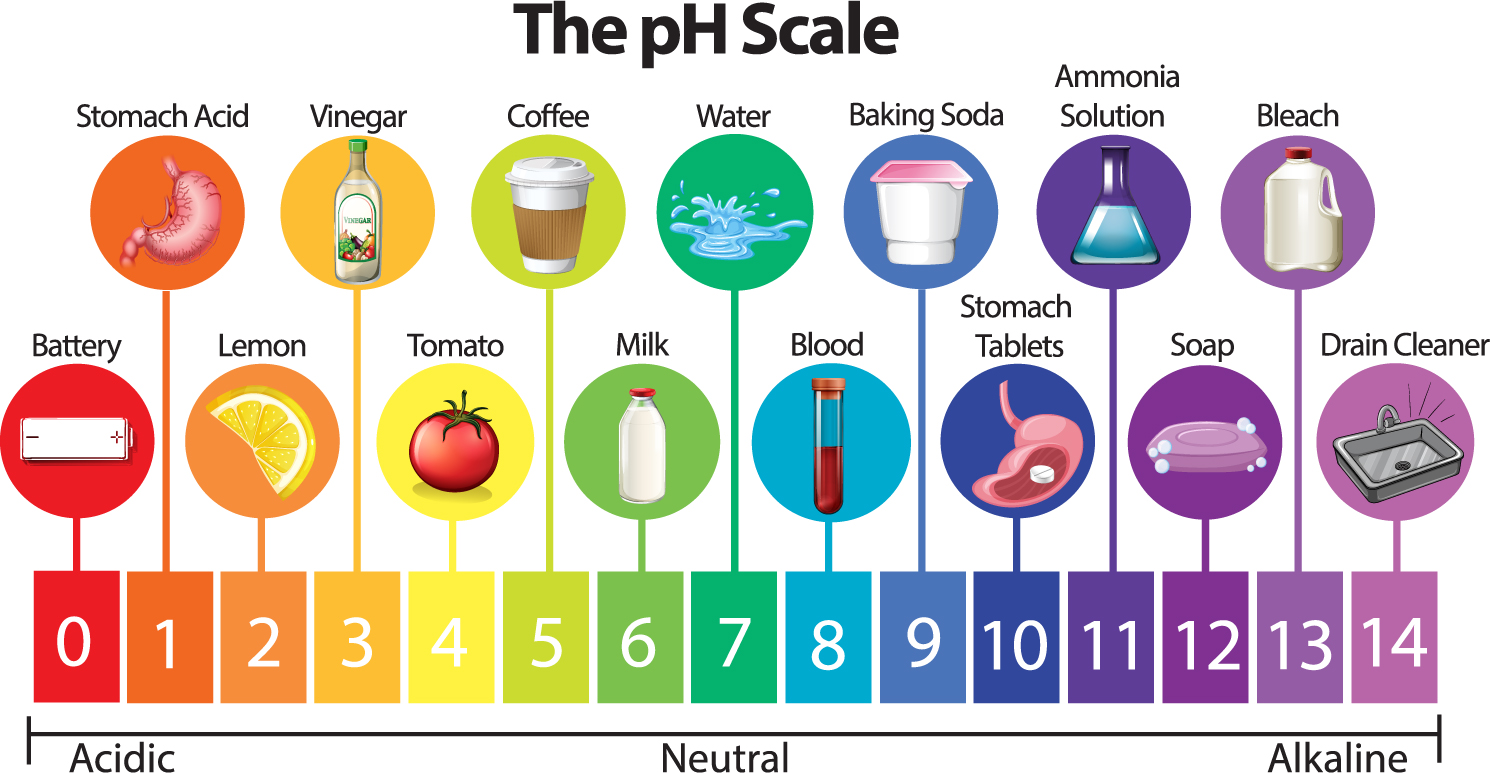
What can cause unbalanced pH?
Pure water’s natural pH level is 7. When chemicals and minerals enter the water supply it can become unbalanced. Water takes on the elements from anything it touches, so the pH levels can vary dramatically across the country. Acidic water is commonly seen in areas such as Northern Wisconsin, Oregon, Colorado Mountains, and New York.
The cause of unbalanced pH is the composition of soil, bedrock, or other surroundings that the water supply comes from. High alkalinity water is a result of rocky areas with a lot of limestone. It contains carbonate, bicarbonate, and hydroxide compounds that dissolve and travel with the water, raising its pH level. On the other end of the scale, reasons for acidic water can come from a number of sources. Rainfall lands as slightly acidic due to the carbon dioxide in the atmosphere. Plant decomposition and chemical runoff are also factors that will lower the pH of water affecting many area’s water supplies. For example, the city of Portland’s water comes from the Bull Run Watershed, which has a lower pH, causing the water to be acidic.
What are the signs I have unbalanced water?
Signs You Have Low pH
- Blue/green staining with copper plumbing
- Leaks in plumbing
- Red or rust-colored staining with galvanized steel or cast-iron plumbing
- Corrosion and leaching
- Metal toxicity
- Sour taste
- Feels slippery
Signs You Have High pH
- Scale build up on fixtures and shower doors
- Reduced water flow
- Scale accumulation at the bottom of tank water heaters
- Bitter taste
It helps to know the signs of high or low pH levels in your home’s water. While occurrences on this list can hint towards low or high pH levels in the water, it is important to test the water’s pH level. A simple DIY test can be done by purchasing a pH test from a pool supply or pet store. These tests will give you an estimate to provide a better idea if you’re dealing with acidic or alkaline water. You can also go straight to contacting your local water treatment professional to not only provide the exact results of your water’s pH level, but make a recommendation on a solution to treat the problem.
How does pH affect my plumbing?
Low pH
Households with a water supply that has low pH, or acidic water, can experience plumbing and appliance headaches. Acids have a corrosive nature. They are starving to take on more minerals. It’s like they are trying to balance themselves back to a neutral 7 pH, and therefore they strip material away from anything they touch. This means that acidic water eats the plumbing throughout the home, as well as water using appliances, causing leaks in the pipes.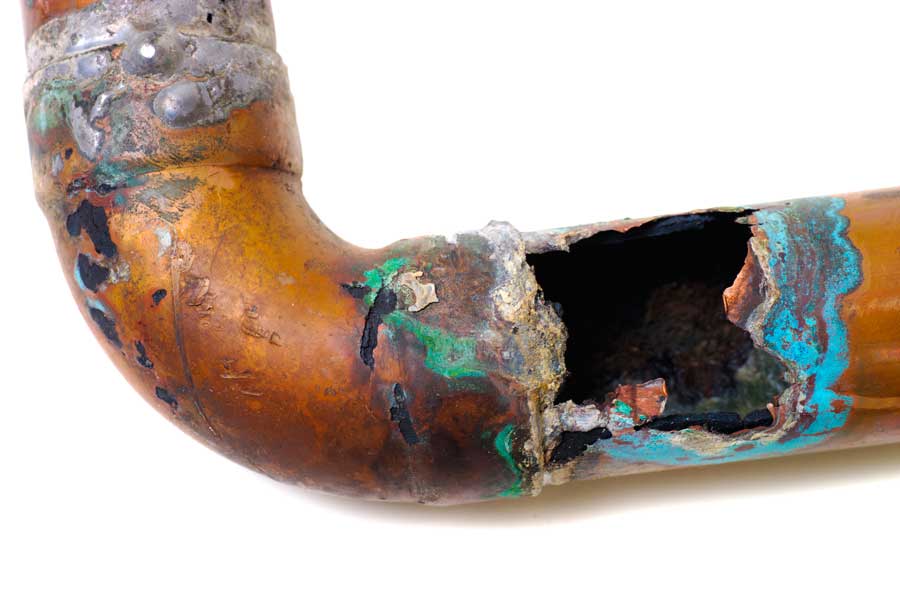
The material being stripped from the metal pipes is entering the water supply. Homes with copper plumbing can have blue/green staining on fixtures from the dissolved copper depositing in your sink. Homes with galvanized plumbing might witness red or rust-colored stains on vulnerable surfaces.
While some metals can enter water from the environment, acidic water can also cause unwanted metals to enter the home’s water supply. Common metals coming from the home’s plumbing that might contaminate the water from acidity are lead, copper, iron, and zinc.
High pH
High pH levels have the opposite effect. Alkaline water is carrying too many minerals and wants to get rid of them to balance itself back to a neutral pH. This causes scale build up with the potential to ruin faucets and shower doors. Scale build-up can also be present in water heaters and other water-using appliances, damaging their heating elements and hindering their ability to work properly.
Water with high pH can also cause so much scale build up in piping that water flow is reduced, clogging it like an artery. This can cause poor water pressure throughout your home.
Is unbalanced pH a health concern?
pH levels of water are considered to be a “secondary” drinking water contaminant, meaning it does not pose a health risk and is more of an aesthetic issue. While the pH of drinking water is not regulated by the EPA or other government agencies, they do recommend the level is between 6.5 and 8.5 for everyday use.
If you’re curious about claims by bottled water companies that alkaline water has more health benefits, Water Technology’s article, pH paranoia: Understanding alkaline water claims, explains the irrelevance pH has to drinking water. The article concludes that when it comes to drinking water, there is no reason to consider the pH level because the body naturally balances pH levels.
How to correct pH levels
As mentioned earlier, pH is like water temperature. If you have hot water, you add cold water to bring it to room temperature. Balancing pH works in the same sense.
To increase the pH of acidic water, you want to neutralize it by adding the minerals that it is looking for. This can be done using an Acid Neutralizer whole home filter. The Acid Neutralizer uses a naturally occurring calcium carbonate media, called calcite, that dissolves in the acidic water to raise the pH level. Finding the appropriate level of correction needed for your water can be tricky, so it is important to talk to your local water treatment expert to install the equipment properly.
With water that is basic, it’s carrying too many minerals and is considered a hard water problem. Hard water can easily be treated with a water softener that works by ion-exchange. The resin in a water softener is negatively charged to attract the positively-charged hardness ions. This stops the minerals from getting into the water supply and eliminates hard water headaches throughout the home.
Nature can make some major changes to what is in your water, so it’s always a good idea to consult the experts. If you have concerns about the pH level in your home, reach out to your local water expert to learn more.
Find the right contractor for you.
Recent Homeowner Resources
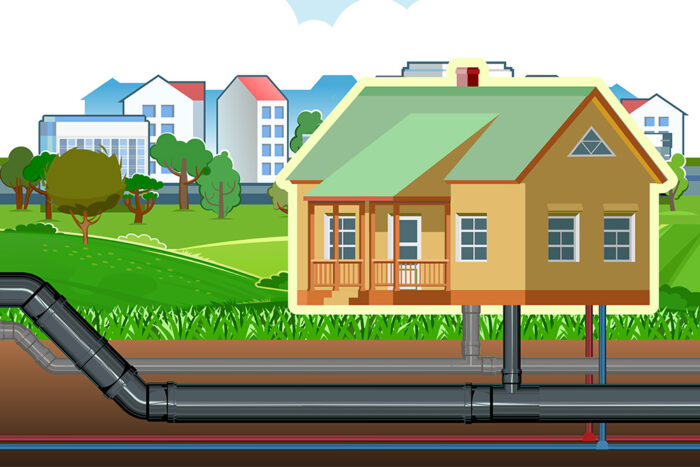
Are You Drinking Contaminated Water? New Rules Help Homeowners Identify Lead Risks
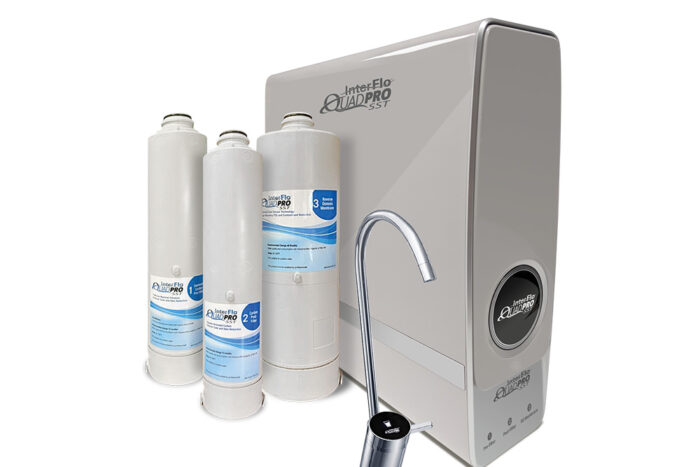
Introducing InterFlo® QuadPro SST!
